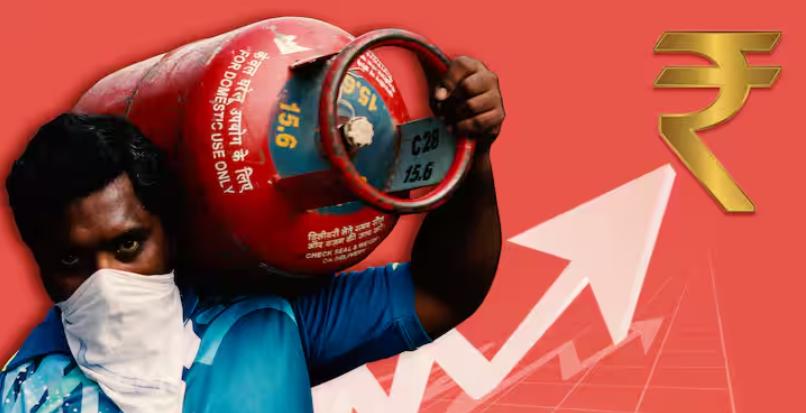Introduction
The Indian government’s Union Oil Minister, Hardeep Singh Puri, announced a significant hike of ₹50 in the price of domestic LPG cylinders on Monday, effective from April 8, 2025. This increase applies to both subsidized and non-subsidized consumers, including beneficiaries of the Pradhan Mantri Ujjwala Yojana (PMUY). The price rise, driven by escalating global energy costs, aims to help oil marketing companies offset their under-recoveries.

Background: The LPG Price Hike
- New Prices: The 14.2 kg LPG cylinder price for PMUY beneficiaries will rise from ₹500 to ₹550, while non-Ujjwala consumers will see an increase from ₹803 to ₹853.
- Reasons for the Hike: Rising global LPG prices and the need to balance subsidy burdens have driven the increase. Since India imports over 60% of its LPG, domestic prices remain highly sensitive to international market fluctuations.
Impact on Households
Economic Burden
- Increased Household Expenses: The price hike will strain household budgets, especially for families heavily dependent on LPG for cooking. Many are already struggling with rising inflation and economic uncertainty.
- Effect on Low-Income Families: Even with subsidies, the increase could challenge affordability for PMUY beneficiaries. The scheme supports over 100 million households, mostly below-poverty-line (BPL) families.
Compounding the economic pressure from LPG prices, thousands have recently lost jobs due to the Supreme Court’s decision to cancel the 2016 West Bengal School Service Commission (WBSSC) recruitment panel, which terminated over 25,000 teaching and non-teaching jobs.
With no immediate job alternatives, affected individuals struggle with:
Meeting daily expenses,
Repaying debts,
Coping with rising costs like the recent LPG price hike.
The combined blow of job loss and inflation has pushed many households into economic instability.

Social Impact
- Rural vs. Urban Divide: The price hike could hit rural areas harder, where fewer alternative cooking fuels exist. While the PMUY scheme has helped rural women switch to clean fuel, higher costs may weaken its progress.
- Health and Environmental Concerns: Some households might return to wood or coal due to rising costs, reversing health gains from PMUY. Burning traditional fuels harms both health and the environment.
Government Response and Future Outlook
- Periodic Price Reviews: The government has announced that LPG prices will be reviewed every two to three weeks, allowing for adjustments based on global market trends.
- Excise Duty Hike: Concurrently, excise duties on petrol and diesel have been increased by ₹2 per liter to help offset losses incurred by oil marketing companies. However, retail fuel prices are expected to remain unchanged.
Conclusion
The recent LPG price hike highlights India’s struggle to balance energy demands with global market pressures. While households may feel the pinch, the government’s subsidy measures and regular reviews should soften the blow. Moving forward, policymakers must closely track how these changes impact vulnerable groups.



